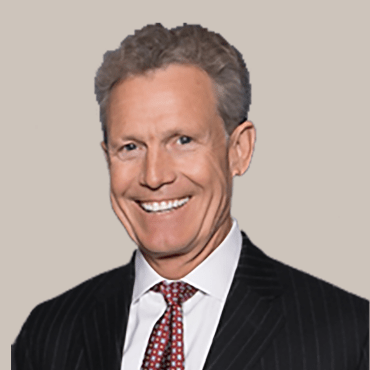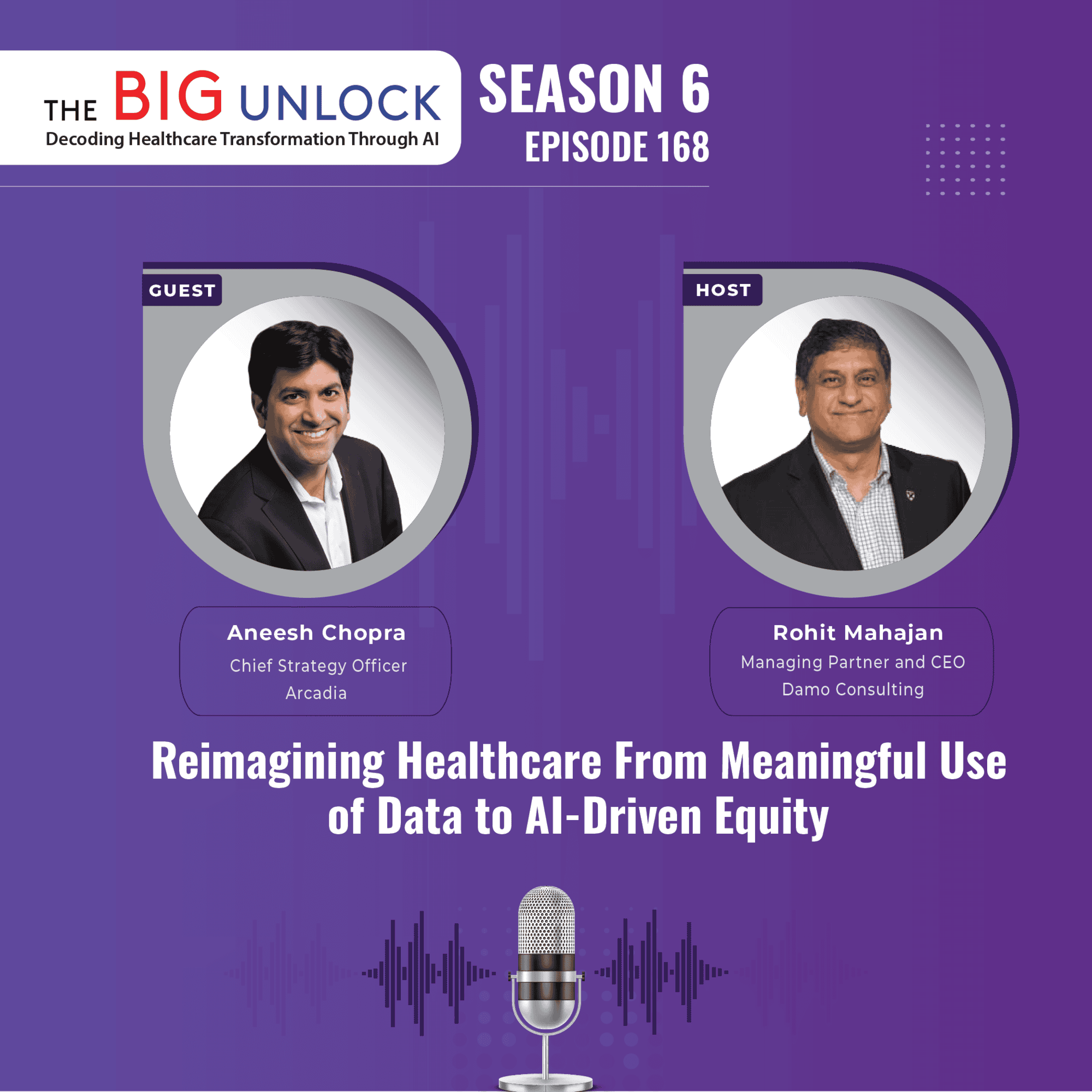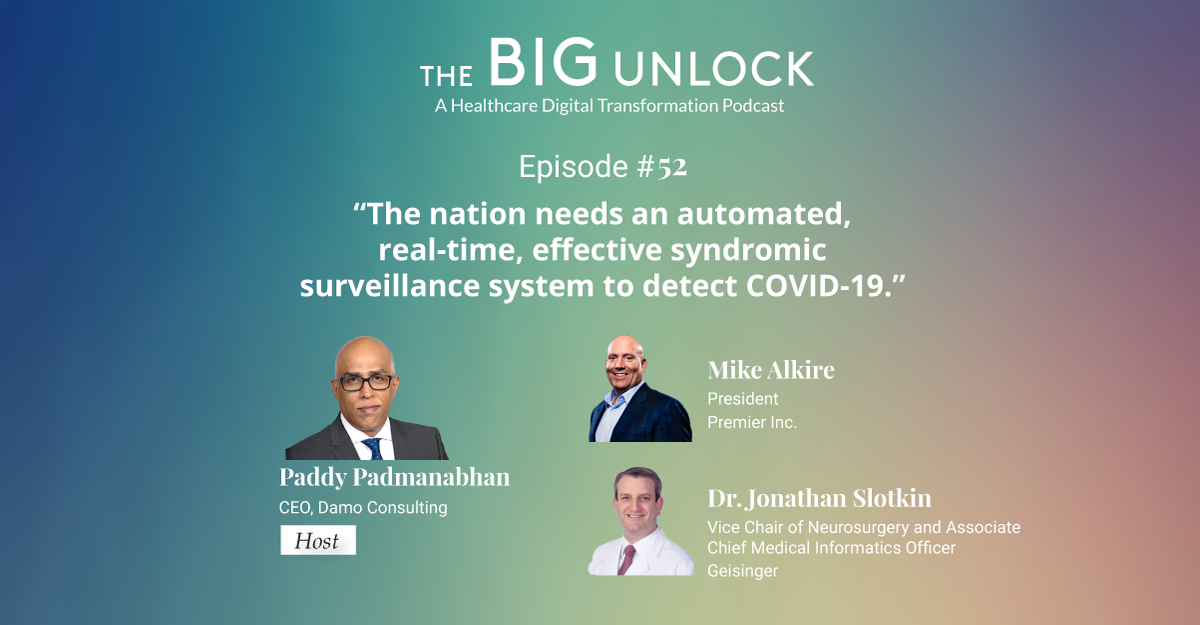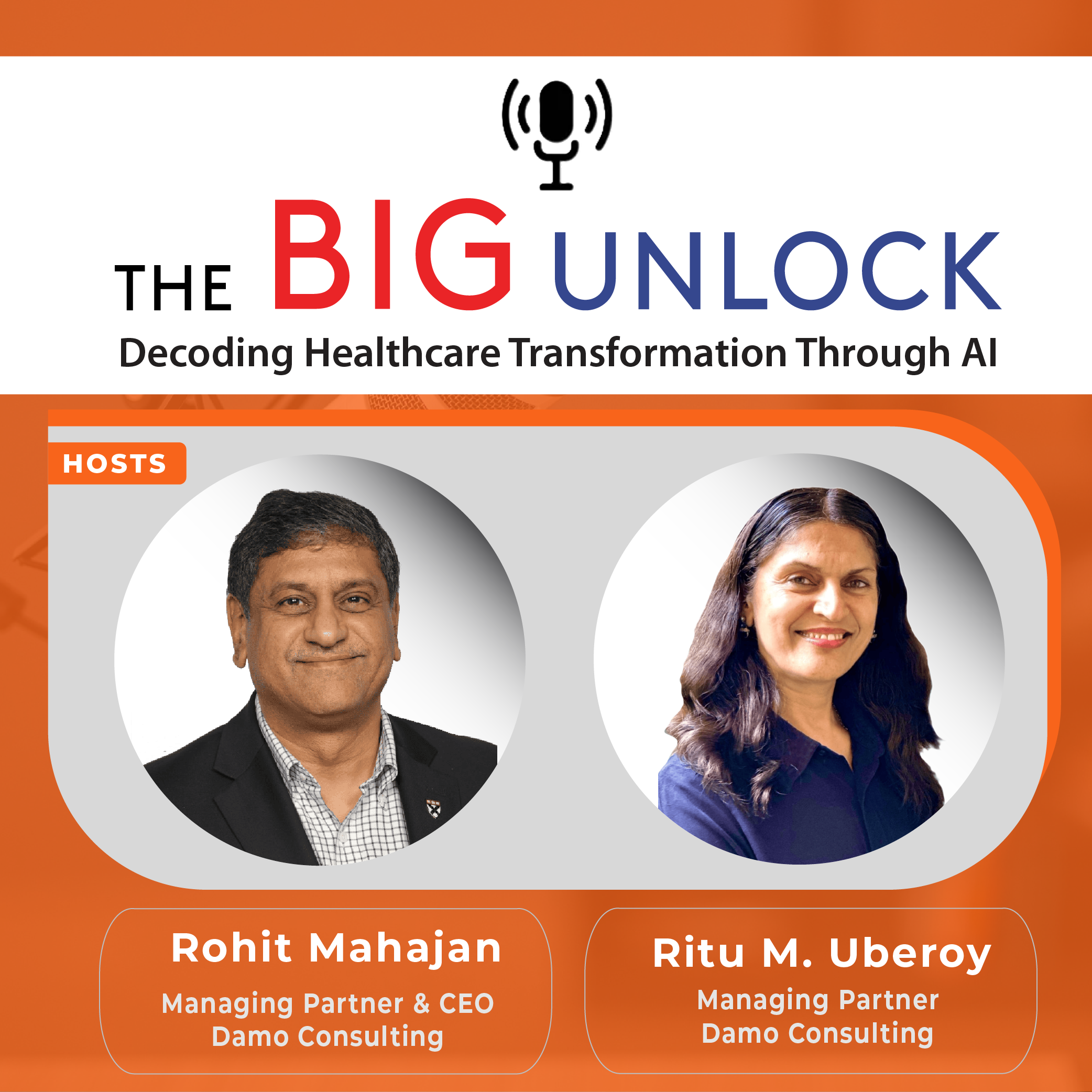Episode #36
We’re empowering our members with data and transparency.
 Hosted by Paddy Padmanabhan
Hosted by Paddy Padmanabhan

In this episode, Paul Black discusses the next wave of opportunities for Allscripts and how digital transformation is shaping the healthcare sector. Paul also discusses emerging technologies and how Allscripts has embraced cloud adoption for many of its solutions. He believes that emerging technologies such as AI, Blockchain, and voice recognition are improving patient experience, driving better healthcare outcomes, and substantially enhancing the physician’s life.
In the context of the ongoing debate about patient data access and the proposed ruling by the HHS, Paul states that Allscripts strongly supports legislation or regulations that address information blocking in healthcare. He suggests that health systems, looking to harness innovation, must bring together outside help with industry experience and their own organizational knowledge from a clinician standpoint to accelerate transformation.
Click to See TranscriptPP: In terms of technology for the healthcare industry, what do you see as the next wave of opportunities for Allscripts?
PB: Allscripts has done a lot of work over the last 25-30 years to get the entire platform, especially in the United States, to be completely digital. It is a very exciting place for Allscripts to be in especially from patient safety standpoint, from our capability to have efficiencies and just to ensure better patient care and better patient access to that care. Also, the digitization of patient records enhances the ability for health systems to deliver care protocols in rural areas just as they deliver care protocols in a large academic medical center in a large populated urban area. This is transformational, and in a transformed environment you are actually going to practice medicine differently for the rest of your life. So, from here, going forward, we’ll never go back to paper. We’ll never go back to the way we used to do it. The entire platform has been not only digitized but transformed. So, again, we look at that and we see a lot of opportunities for that going forward.
PP: So, Paul, you mentioned transformation. Everybody talks about digital transformation. Do you have a definition for it at Allscripts? What do you see as big themes playing out in the name of digital transformation today?
PB: There are three or four things. We have, in many cases, tried to anticipate where the industry is currently so that we can have platforms that are relevant to people that are doing business in a transformed and digitized area. So specifically, around interoperability and population health, our definition around digital transformation has to do with the ability to take a vast amount of data from multiple different electronic medical record organizations and companies to give a unified and community view, a single view, of that patient’s information. We’ve been doing that for quite a while now. And I think that’s an important construct that you have to have which is foundational.
Infrastructure has to be in place because no one is ever going to get to one record. You are always going to talk to the state, you are always going to talk to insurance companies. People have different electronic medical records or other information systems that have clinical information in them that are relevant to that individual person who has a condition that you’re trying to help them recover from. So that’s one.
The other one that I think is important, is the consumer. We all have talked about the concept of a patient being a consumer. Unfortunately, the status they have as a human being is defined as one who has become sick, met an accident, or some episodic condition that they have been battling for many, many years. But the consumer, is somebody who proactively looks for and shops, compares and writes, and, you know, is really actually very actively is engaged in the buying process. And specifically then for us in healthcare, the consumer is somebody we have to really be aware of and what their patterns are, what their likes and dislikes are, how they like to be treated, how they like to access the health system and what kind of requirements they have when they are on their smartphone or their iPad. What are the services they are looking for that weekend, that night, that evening; where they can quickly go in and get certain mobile care.
PP: What is your take on the debate that’s going on today with regards to providing access, specifically the HHS proposed ruling around providing access and where do you think we are today? Is this something that you see being resolved in the near term or do you see that being an ongoing concern?
PB: The regulations that are out there and being proposed are going to be distributed very quickly, I think. We actually have been very heavily engaged in this process going back to the 21st Century Cures Act. I think it is about going back to a very foundational and important pillar inside the EHR community. We have a very important voice in Washington, D.C., and on multiple different topics I’ve had a chance to testify in two separate congressional hearings on the topic.
We met two months ago with HHS Secretary Alex Azar and Joe Grogan. Joe is the White House Director of Domestic Policy. We had discussions in this specific area and the specific arena, and there are a lot of things that we really like about it. There are just a few things that we asked for some further clarification around intellectual property protections, market-based pricing models for information exchange, and the appropriate scope of certification requirements. They’ve been very good about listening and have been very considerate of the feedback. We’ve had a very constructive dialog with them on those topics.
PP: I heard you say that there have to be some guardrails around how the access is provided in order to protect patient data. Did I hear you right?
PB: Yes, you did. The guardrails are already in place that we are adhering to. Anybody in this industry has been extraordinarily cautious about and respectful of the laws that are out there for all the good reasons. Specifically, on this one, going back to the regulatory environment, we have never advocated against legislation or regulations that address information blocking in healthcare. We strongly support that and have been part of this open infrastructure ecosystem since 2007. It’s interesting that same year the iPhone came out too.
We believe that people should have access to the data and that system should be much more open at an API level, which the legislation also requires more than just the HL7. FHIR also been very important in that area. But we also believe, importantly, that every patient has a right to control where their health data goes when it moves or doesn’t move, and who sees it. And so, we actually grant consent at the patient level with our consumer platforms. We have been advocating for that, and that was one big piece of this legislation that we were extraordinarily supportive of. We’ve always been encouraging of the legislation to give the patient full control of their patient medical record.
PP: Where do you see are the big use cases for AI, machine learning, advanced analytics in your work and in some of your clients?
PB: There’s been a fair amount of work that’s been going on for a long time. Over the last two or three years, AI is getting a lot of attention for things like Watson and some of the other big players that are out there using artificial intelligence for cancer, or radiology. They are using it for the substitution of a human to be able to look at certain data patterns and to come up with a different answer or a better answer and a more efficient answer. So, I think those are a couple of examples of the way the people are looking at it today. I think that there will also be, from an efficiency standpoint, a lot of artificial intelligence utilized for that.
The other piece of data that comes in is when you’ve automated the shop for healthcare. Not only do you get clinical information in real-time, but you also get consumption information in real-time, such as how efficient organizations are about moving patients through the system. Will that be the ED wait time? Or components like that all the way through how many resources were consumed in order to do a certain specific surgery and how much time it took in the overall costing of that? I think it’s going to be a lot of fun to track. What we like a lot are the capabilities once the data is stored, structured and now we have to study it, but also to use the data crawlers and some other capabilities that exist out there to give us new insights about populations that we can go then put specific programs around.
When you think about it, you’re financially responsible for a large community of people. That’s one element at the big data level that I would look at. By big data, I mean you’re looking at multiple hundreds of thousands if not many people at once and you’re looking for specific conditions and specific precursors of that disease warning signals or flares or other weird events, that if you follow closely, you might be able to prevent the further deterioration of that patient. Whether that be COPD or cancer or some other areas that are out there.
So, I think those are all capabilities that exist today that I think are exciting and those are capabilities that many different organizations are getting much, much better at utilization.
PP: Do you think we are seeing more benefits from non-medical use cases of AI than in the actual practice of medicine?
PB: I probably would not agree with that. There are equivalent use cases for the financial information around HCC coding, around appropriate billing, around the financial side of healthcare. Anytime you look at large rooms of human beings that are staring at screens and are punching away on their keypads – I think there’s great opportunity for that. But I wouldn’t necessarily say that overreaches what the clinical benefits are in the clinical usage of those systems are today. But I do think there is a substantially large amount of that.
Things like blockchain are probably, at least currently, best suited inside of financial elements in insurance companies and other things inside of healthcare that makes it a great tool. But there’s also the clinical side of blockchain, another great example of that use case would be Medrec. Medical reconciliation of all the different medications that people are on would be a perfectly well-suited application for a blockchain. And it’s a big, big opportunity.
It is also a big problem if you do not properly understand every single medication that a person is on. And unfortunately, many times, the number of medications that people are on, they don’t really remember everyone that they’re on either. Therefore, as a pharmacist, you are engaging with a bunch of different systems at once – the consumer side, the hospital dispense, the local pharmacy dispense, the mail order, and making sure that all of those medication administration records tightly fit together and they all have a ledger approach with which blockchain can lead a very simplistic way to be able to make that happen, which is pretty exciting.
PP: Can you comment on where we are with voice recognition and specifically may be what you’re doing at Allscripts to incorporate voice into your solutions?
PB: Voice recognition has been out there for the last 25-30 years, especially in radiology departments. It has been great. And, probably on a scale of 1 to 10, 10 being finished, that’s probably somewhere at a 9. So, there is the ability for voice recognition to replace a keyboard, substantially enhance the physician’s life.
There is a lot of experimentation going around taking that technology and extrapolating that and using it into a very busy primary care clinic and having the caregivers being able to talk to a device that’s in that room and not have their hands on a keyboard. We call that the keyboard-less visits. And we have clients that are working on that today at scale and they’re getting a lot of value out of that. They’re clinicians like that, because anything that takes them away from having to hunt and peck on a computer keyboard, they’re all in, especially when you’re trying to see 40 to 60 patients a day. It really can help compress the amount of time that they’re spending, doing documentation. Chart reviews and other things like that in advance are still needed. But that’s another very important use case. I think that will only continue to enhance the experience that clinicians have and the usage of will continue to be accelerated outside of radiology into almost all areas of the practice of medicine.
That’s certainly the work that’s going on between Microsoft, Apple, and Amazon on this topic and will highly accelerate the efficient and clever uses of the technology that has been out there since the 80s and perfected, about 20 years ago for radiologists. Voice recognition needs to be moved into mainstream clinical care.
PP: Do you see keyboard-less technologies, such as identity and access management for patients through facial recognition, picking up as well from an emerging tech standpoint?
PB: Yeah, there’s a lot of different ways for people to log in, which is another problem. But the two-factor authentication is needed from a security standpoint. And that requirement will be out there, especially for medications, the narcotics, and other controlled substances that are out there. And so, the ability to navigate and identify a person through a palm, a fingertip, a retinal eye scan are capabilities that exist today. It will continue to get better and easier for caregivers to get through who you are. That will form a very important part of the process of being logged into a system.
PP: We’re seeing a lot of cloud data sharing agreements. Where do you see us today in terms of cloud adoption in healthcare? And where do you see the big opportunities?
PB: We have a number of our applications that are a native cloud today. We have other applications that are moving to the cloud. There’s no question that this technology is being rapidly embraced by and adopted throughout healthcare. I do think that they are a bit of a late adopter, but that doesn’t mean the acceleration of that adoption can’t be substantial as compared to somebody that might be in the cloud in other industries 10 years ago.
So, number one is that it is not only coming, but it’s here. And as recently as three years ago, we do business in other countries, a national policy minister for health stated you could not have patient data in a cloud infrastructure. Today, it’s encouraged and considered an extraordinarily important move. For people like us that have applications whether it’s an EMR or other solutions that are out there, that opens up a lot of opportunity. So, from our perspective, the benefit of having something in the cloud is somewhat obvious. The ability to ubiquitously access this data from any device, to have a different, and more robust layer of security, especially when you think about the investments that these organizations – Amazon, Google, Microsoft – make every year in the digital infrastructures and the cybersecurity surveillance capabilities, they dwarf the investment that a large integrated delivery system could ever make. I think that will be one of the more compelling reasons why people move to the cloud.
The third reason would be that the total cost of ownership, not having to do upgrades, not having to buy hardware, not having to have your own local backup data centers, all of that goes away with the transition to the cloud. And therefore, the total cost of ownership for an institution as they look at being able to have a different utility that provides those services to them. While it may not be the total parity today, there’s no question in my mind that over the next decade that service will be performed and that the competition between those organizations, like any other technology, will eventually drive that cost down to a point where the cloud will not only be affordable but extraordinarily attractive.
PP: How are you harnessing digital health innovation in your own product portfolio? And what is your recommendation for health systems that are struggling to do it in a way that doesn’t break the bank?
PB: Well, there are three or four things, I guess I would say. Number one is the fact that when we talk about being open and connected, that we build open, connected communities at health. The word “open” is really important, it’s not just a buzzword. In our ability to not only have that as a culture inside the company but how we build our solutions and the access that we grant third parties to relatively deep level APIs, is an important construct that distinguishes us from other people that have been in this industry as well. Part of that open framework for us creates an incentive for startups to utilize our platform and to partner with us to build their business case, their business model, and to take their innovation into a welcoming environment where they can prove out and test cases, but also get access to clients that are already connected to a network and potentially gets to scale much more quickly. So, we encourage that. We fund some of the people that we work with. We see a lot of different companies. We have over 279 different companies that have written applications that sit on top of our solutions. We have clients that have written their own and sit on top of that environment, that ecosystem that we’re trying to create to support entrepreneurs and support innovation. It has been something that I actually inherited when I first got here. In 2013 we gave out that are in the user’s group a million dollars for the top four applications that have been developed and that sat on top of our ecosystem. So that’s something we’ve got. It’s not a lip service, we actually embrace it and we support it. We have people that are dedicated to helping those folks become successful.
Clients, many of them are building a capability inside their organization, especially large ones, where they have a JV fund, where they’re actually looking for and then putting money into third parties, entrepreneurs who are building applications and have already declared startup status. There are a number of large organizations all over the country that have this business line of helping fund venture capital-backed organizations that are building and innovating new platforms inside of healthcare. There’s a lot of that activity and I like that, and I encourage that, and again, to the extent that those applications that are funded by JVs and supported by large integrated delivery networks are also part of the Allscripts ecosystem. We just think that’s a wonderful, wonderful way to bring innovation to healthcare in a much-accelerated manner.
PP: What is your recommendation to health systems that are looking to harness all this innovation? How should they go about accelerating the adoption of innovation? What are some of the best practices that you’ve seen?
PB: I think organizations like University Hospitals in Cleveland, Northwell, Ascension – all have these funds that are set up and they act. They brought in somebody from the outside typically who had background experience in investing in joint ventures that combine them with the organizational knowledge of what kind of solutions actually would work in that kind of experience from a clinician standpoint is a pretty powerful combination. I’ve got people that know what problems I’m trying to deal with today. I got people that know how to look for, search out and procure dollars and to find the companies that are building things. The combination of those two with them, the ability to immediately inject that solution into a relatively large ecosystem, their own caregivers make it a very powerful combination.
PP: Paul, any closing thoughts? Anything exciting planned for HIMSS that is around the corner?
PB: We love HIMSS. We like to have a lot of people there. A great place to meet a lot of clients, suppliers. We actually do a fair amount of recruiting there. We talk to analysts, both people that follow the industry. We talk to a lot of people that write about the industry, folks like yourself. So, it’s a very efficient way to spend three or four days. We will highlight some new capabilities that we have down there, which is always kind of fun. Talk about the innovation that Allscripts brings to the table and also a fair amount of putting exclamation points around some of your clients’ experience and some of our clients’ success.
Disclaimer: This Q&A has been derived from the podcast transcript and has been edited for readability and clarity.
About our guest

Paul Black is the Chief Executive Officer and a Director of Allscripts. As the CEO, Paul guides the company’s vision to fulfill its global commitment to build open, connected communities of health.
Prior to joining Allscripts in 2012, Paul spent more than 13 years with Cerner Corporation in various executive positions, retiring as Cerner’s Chief Operating Officer in 2007. Paul’s career started with IBM Corporation where he spent 12 years in a variety of leadership positions in sales, product marketing and professional services.
Paul has served on multiple publicly traded, private company and nonprofit boards of directors for companies in healthcare information technology, patient monitoring, healthcare services, healthcare delivery, healthcare device, and consumer internet marketing.
In Kansas City, Paul spent 16 years as Chairman and as an Executive Officer of Truman Medical Centers, an academic safety net health system. He currently is on the board(s) of The Advancement Board University of Kansas Health System and the Harry S. Truman Presidential Library. Paul holds a Bachelor of Science degree from Iowa State University and an MBA from the University of Iowa.
See all Nominate a guestAbout the host
Paddy Padmanabhan is a widely published and quoted thought leader on digital transformation in healthcare. He is the author of The Big Unlock: Harnessing Data and Growing Digital Health Businesses in a Value-Based Care Era, and the CEO of Damo Consulting Inc, a digital transformation and growth advisory firm based in Chicago.Connect
Share on facebook Share on twitter Share on linkedin Share on email
The Big Unlock Podcast · Reimagining Healthcare From Meaningful Use of Data to AI-Driven Equity – Podcast with Aneesh Chopra In this episode, Aneesh...

In this episode, Mike Alkire, President of Premier Inc. and Dr. Jonathan Slotkin, Vice Chair of Neurosurgery and Associate Chief Medical Informatics Officer of...

In this podcast, Amit Phadnis, Chief Digital Officer at GE Healthcare reflects on how a geographical transition and a change in domain from IT...